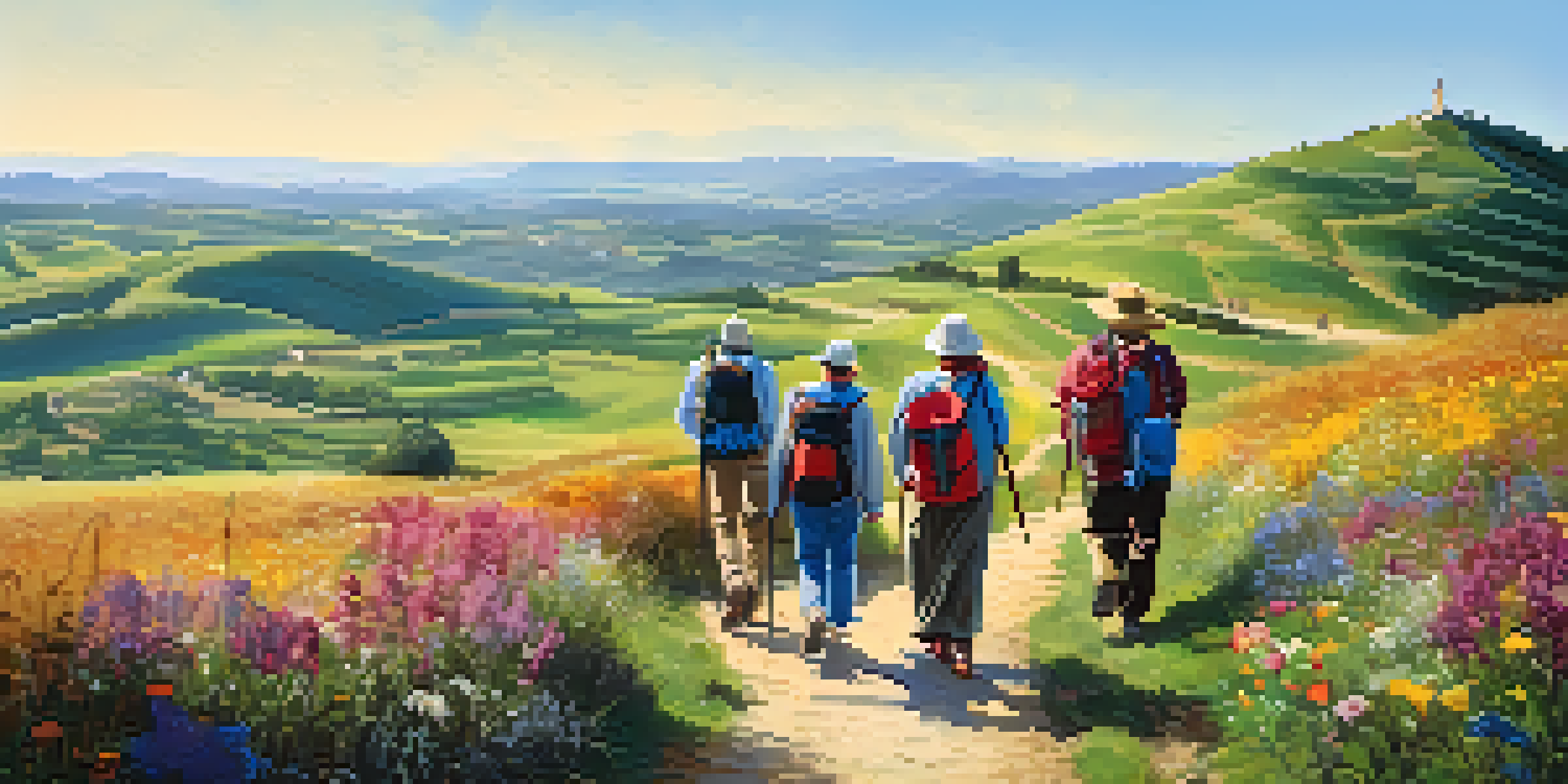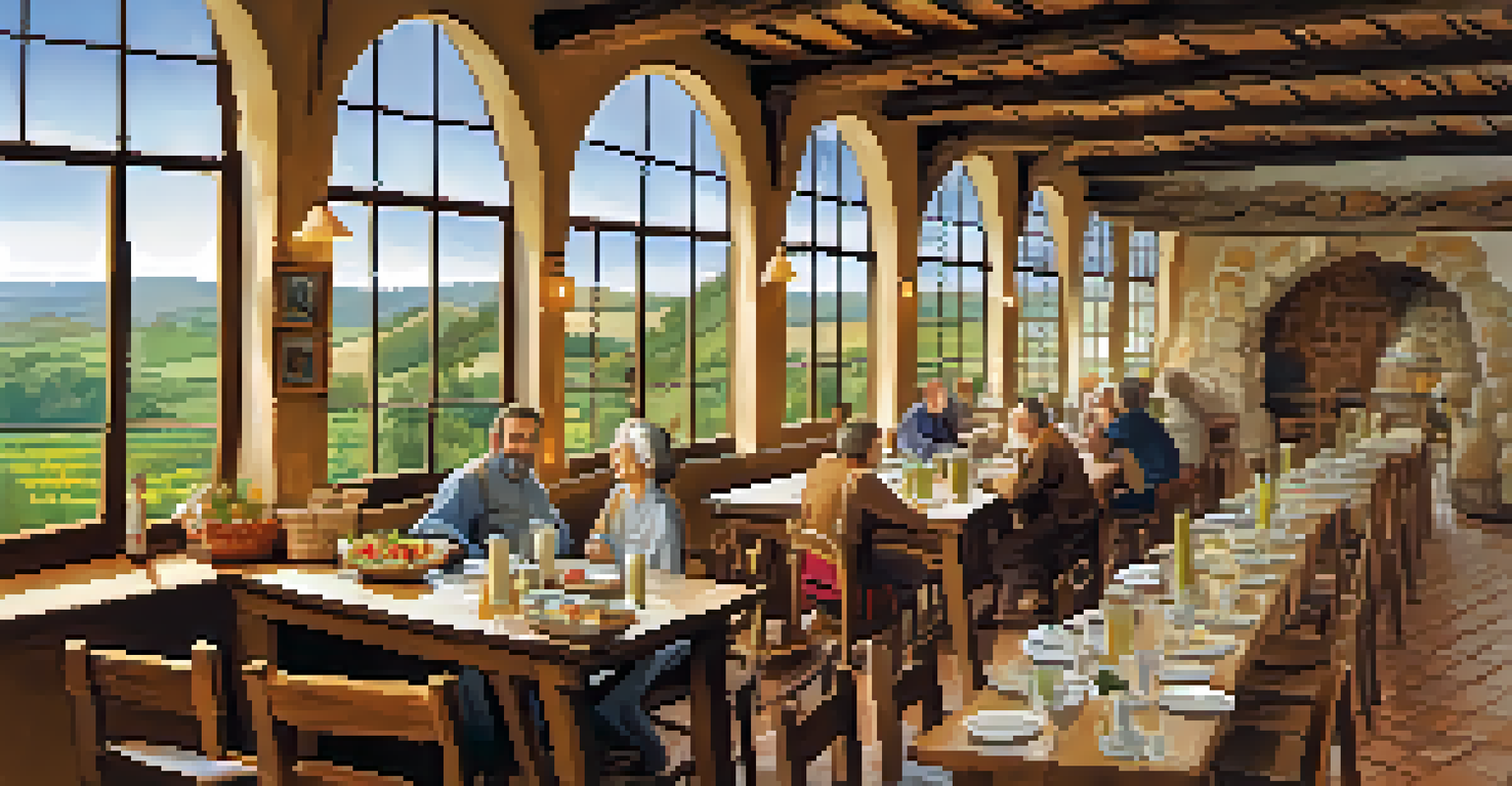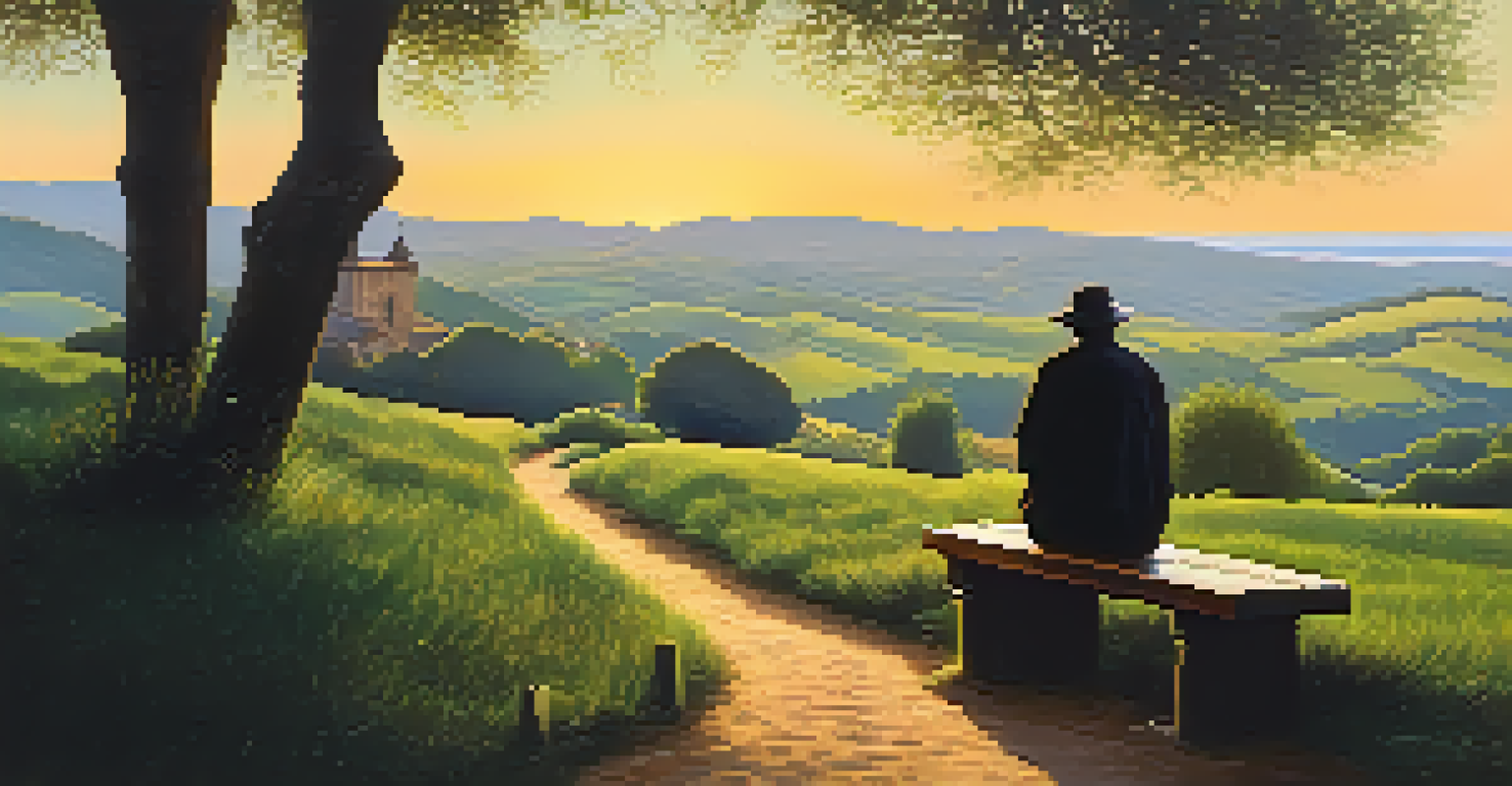Cultural Significance of the Camino de Santiago Pilgrimage

Historical Roots: The Origin of the Camino de Santiago
The Camino de Santiago, also known as the Way of St. James, has origins dating back to the 9th century, when the remains of Apostle James were believed to be discovered in Santiago de Compostela. This event sparked the beginning of a pilgrimage that would attract countless travelers over the centuries. As a result, the pilgrimage route became a significant site for Christian faith, drawing both the devout and the curious.
The journey of a thousand miles begins with one step.
Over time, various routes emerged, each with its unique challenges and landscapes, offering a mix of adventure and spiritual reflection. Pilgrims journey across diverse European terrains, from the lush valleys of France to the rugged mountains of Spain, creating a tapestry of cultural exchange. This historical pilgrimage not only shaped the religious landscape but also influenced local economies and cultures.
Today, the Camino is recognized as a UNESCO World Heritage site, symbolizing a living tradition that continues to evolve. The blend of historical significance and spiritual journey attracts people from all walks of life, making it not just a religious endeavor but a global cultural phenomenon.
Cultural Exchange: Interactions on the Camino
The Camino de Santiago is a melting pot of cultures, where pilgrims from various countries converge, sharing stories, traditions, and meals. This cultural exchange enriches the experience, allowing travelers to learn about each other's backgrounds and perspectives. For instance, a shared meal in a local albergue may lead to discussions about life in Spain versus Italy, highlighting the beauty of diversity.

As pilgrims walk the same paths that have existed for centuries, they often find themselves in awe of the historical landmarks and local customs along the route. From the vibrant festivals in towns to the age-old practices of hospitality, these interactions create lasting memories and friendships that transcend language barriers. Many pilgrims leave the Camino with not just a sense of accomplishment but also with newfound connections.
Historical Roots of the Camino
The Camino de Santiago began in the 9th century, becoming a significant pilgrimage that intertwines faith, culture, and history.
Moreover, this cultural exchange fosters a sense of community among the pilgrims, reminding everyone that the journey is as important as the destination. It underscores the idea that no matter where we come from, we are all united by the shared experience of walking the Camino.
Spiritual Journey: Reflection and Growth
For many, the Camino de Santiago is not just a physical journey but a profound spiritual quest. As pilgrims traverse the varied landscapes, they often find themselves reflecting on their lives, beliefs, and aspirations. This introspective journey can lead to personal growth, healing, and a deeper understanding of oneself.
Traveling – it leaves you speechless, then turns you into a storyteller.
Walking for hours each day, surrounded by nature, provides a unique opportunity for solitude and contemplation. Many pilgrims have reported life-changing insights or a renewed sense of purpose, often feeling a spiritual connection that transcends traditional religious practices. The quiet moments along the trail allow for deep reflection, inviting individuals to pause and consider their paths.
Additionally, the communal aspect of the pilgrimage offers a supportive environment for sharing thoughts and experiences. Conversations with fellow pilgrims can lead to unexpected revelations, creating an atmosphere where vulnerability is welcomed. This blend of solitude and community fosters a transformative experience that resonates long after the journey ends.
Artistic Influence: Inspiration from the Camino
The Camino de Santiago has inspired countless artists, writers, and musicians over the centuries, leaving a rich legacy of artistic expression. From paintings depicting the serene landscapes to literature that captures the essence of the pilgrimage, the Camino has become a muse for many. One can see this influence in famous works that evoke the spirit of adventure and spiritual exploration.
Moreover, modern adaptations of the Camino story can be found in films and music, reflecting its ongoing relevance in popular culture. Movies like 'The Way' highlight the personal journeys of pilgrims, illustrating the transformative power of the path. This artistic exploration invites a broader audience to appreciate the cultural significance of the Camino.
Cultural Exchange on the Path
Pilgrims from diverse backgrounds share experiences and traditions, fostering connections that enhance the journey.
Through art, the Camino's stories and experiences continue to resonate, allowing individuals to connect with its essence even if they have never walked the path. The creativity inspired by the pilgrimage helps keep its rich history alive, ensuring that future generations can appreciate its beauty and significance.
Culinary Traditions: Food along the Camino
One of the most delightful aspects of walking the Camino de Santiago is the opportunity to savor unique regional cuisines. Each area along the route offers its specialties, reflecting local traditions and agricultural practices. From hearty Galician octopus to flavorful paella in the regions of Valencia, pilgrims are treated to a culinary journey as diverse as the landscapes.
Food serves not just as sustenance but as a cultural experience, often enjoyed in the company of fellow pilgrims. Sharing a meal can forge bonds and create memories that enhance the overall pilgrimage experience. Local taverns and albergues often provide a warm atmosphere, where stories are exchanged over bowls of steaming soup and freshly baked bread.
Additionally, participating in local food traditions allows pilgrims to engage with the culture on a deeper level. Whether it's learning to make a traditional dish or enjoying a local wine, these culinary experiences enrich the journey, reminding travelers that food is a vital part of community and culture.
Modern Pilgrimage: The Camino Today
In recent years, the Camino de Santiago has experienced a resurgence in popularity, attracting not only religious pilgrims but also adventure seekers and those looking for a break from the routine of daily life. With its well-marked trails and supportive infrastructure, the Camino is more accessible than ever, welcoming all kinds of walkers. This modern twist has led to a diverse mix of travelers, each seeking their own personal journey.
Social media and travel blogs have played a significant role in promoting the Camino, showcasing stunning landscapes and personal stories that inspire others to embark on the journey. Pilgrims are now sharing their experiences online, creating a community that extends beyond the physical trail. This digital presence helps to keep the spirit of the Camino alive, connecting individuals across the globe.
Modern Pilgrimage Trends
The Camino has seen a resurgence in popularity, attracting a mix of travelers seeking adventure, reflection, and community.
However, this popularity also brings challenges, such as overcrowding in certain areas and a need for sustainable practices. As more people walk the Camino, there’s a growing emphasis on preserving its cultural and natural heritage, ensuring that future generations can enjoy the same transformative experience.
Legacy of the Camino: Continuing the Tradition
The legacy of the Camino de Santiago extends far beyond the physical journey; it embodies a tradition of faith, exploration, and cultural exchange that continues to thrive. As pilgrims complete their journeys, many are inspired to carry forward the lessons learned and share them with others. This passing of knowledge helps keep the spirit of the Camino alive, encouraging new generations to undertake the pilgrimage.
Moreover, many communities along the route have embraced this legacy, hosting events and festivals that celebrate the Camino's history and importance. These cultural celebrations not only foster local pride but also invite travelers to engage with the rich traditions that have developed around the pilgrimage. This sense of community strengthens the bond between pilgrims and locals, creating a shared experience.

Ultimately, the Camino de Santiago serves as a reminder that the journey is never truly over. Each pilgrim carries a piece of the Camino with them, influencing their lives and those around them. As long as people continue to walk the path, the cultural significance of the Camino will endure, inviting exploration and reflection for years to come.